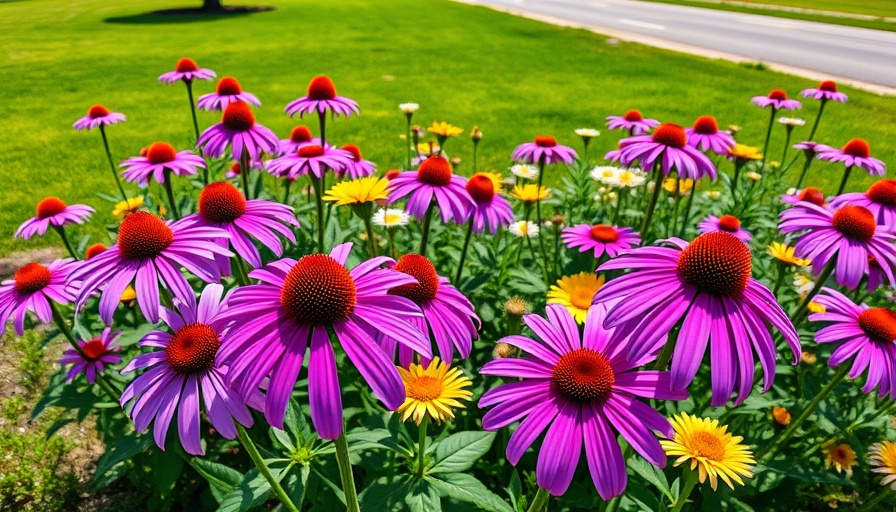
Embrace the Beauty and Benefits of Coneflowers
Coneflowers, also known as Echinacea, are a stunning addition to any garden, known for their vibrant colors and resilience. These native North American perennials thrive in USDA Hardiness Zones 5 to 9, offering a burst of beauty from early summer until fall. With their striking orange, pink, purple, red, or white flowers and a prominent central cone, they stand out in beds, borders, and even wildflower meadows.
Not only do coneflowers bring aesthetic appeal, but they also play a critical role in promoting biodiversity in the garden. Their moderate height (up to 4 feet) and width (up to 18 inches) makes them versatile companions for various other plants. Gardeners are often eager to explore 'companion planting'—the practice of pairing plants that work well together.
What is Companion Planting and Why Does It Matter?
Companion planting involves grouping plants that can benefit each other—whether through pest control, improved growth rates, or shared nutrient needs. Coneflowers thrive in full sun to part shade, requiring slightly acidic, well-draining sandy loam. Therefore, selecting partners with similar conditions enhances not only aesthetics but also the overall health and productivity of a garden. For gardeners looking to cultivate a vibrant ecosystem, knowing which plants pair well with coneflowers is a vital garden design strategy.
Top Companion Plants for Coneflowers: A Diversified Approach
Here are 21 excellent companion plants that align beautifully with coneflowers, enriching the landscape and supporting local wildlife:
- Anise Hyssop: Known for its purple blooms and pollinator attracting properties, this plant thrives alongside coneflowers.
- Asters: With a variety of colors, asters bloom from late summer to fall, complementing the flowering period of coneflowers.
- Bee Balm: A colorful, fragrant option that not only attracts pollinators but also enjoys similar soil and sun conditions.
The list continues with popular and beneficial plants like Black-Eyed Susans, Blazing Stars, and Zinnias. Each brings unique colors and attracts various pollinators, creating a lively and diverse garden ecosystem.
Nurturing Healthy Plants Through Knowledge and Care
To ensure that your garden flourishes, proper care and maintenance are essential. Basic gardening tips like regular watering (while avoiding overwatering), weeding, and understanding pest control will contribute immensely to the health and longevity of your coneflowers and their companions.
Plant care is not just about aesthetics—it's also about creating a nurturing environment for garden pollinators, including butterflies and bees. By understanding how your plants interact, you can enable a thriving environment that supports local wildlife and enhances garden beauty.
From Theory to Practice: Implementing Companion Planting
To incorporate companion planting into your gardening projects, start with a garden layout that considers the sunlight and space requirements of each plant. For instance, placing taller companions like Joe-Pye Weed behind shorter plants like Shasta Daisies can create a beautiful layered effect.
Consider container gardening or raised garden beds if space is limited. These techniques allow you to control soil quality and conditions more easily, making it simpler to manage a variety of plants side by side. Additionally, ensure you provide adequate watering and nutrients, especially in the drier months, to maximize the health of your flowering companions.
Creating a Year-Round Garden
Lastly, think about how to maintain garden interest throughout the seasons. While coneflowers dominate the summer months, consider including early spring flowers such as daffodils or late bloomers like sedums to keep your garden lively and welcoming year-round.
Embracing the practice of companion planting not only enhances the beauty of your space but also contributes significantly to biodiversity. By strategically pairing coneflowers with the right companions, gardeners can cultivate a thriving ecosystem that is as beautiful as it is functional.
 Add Row
Add Row  Add
Add 




Write A Comment